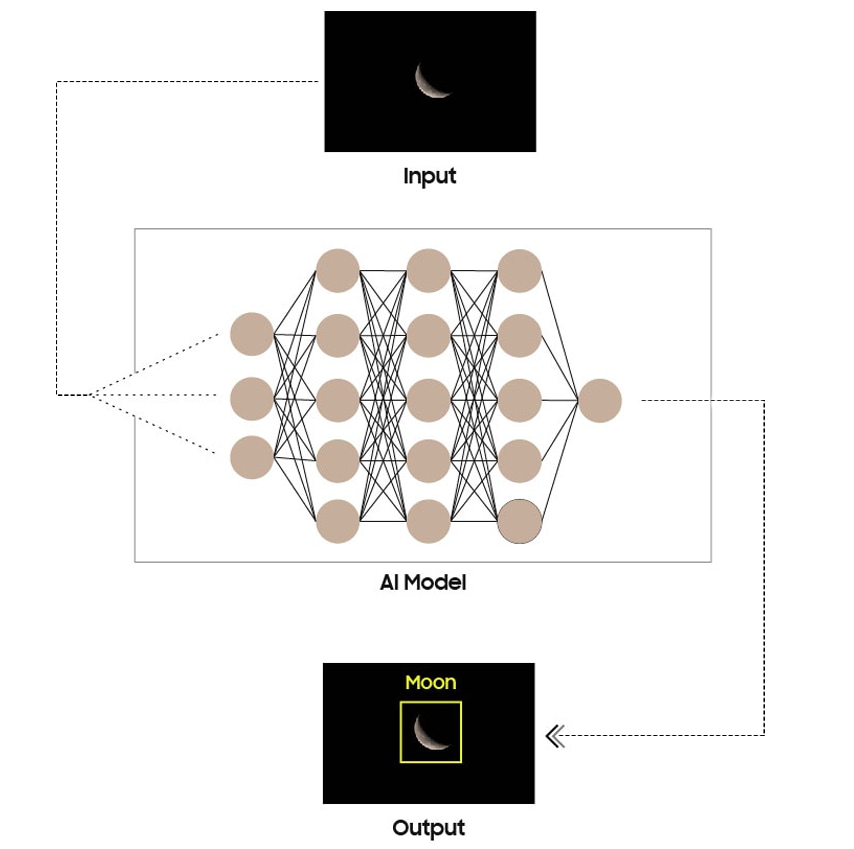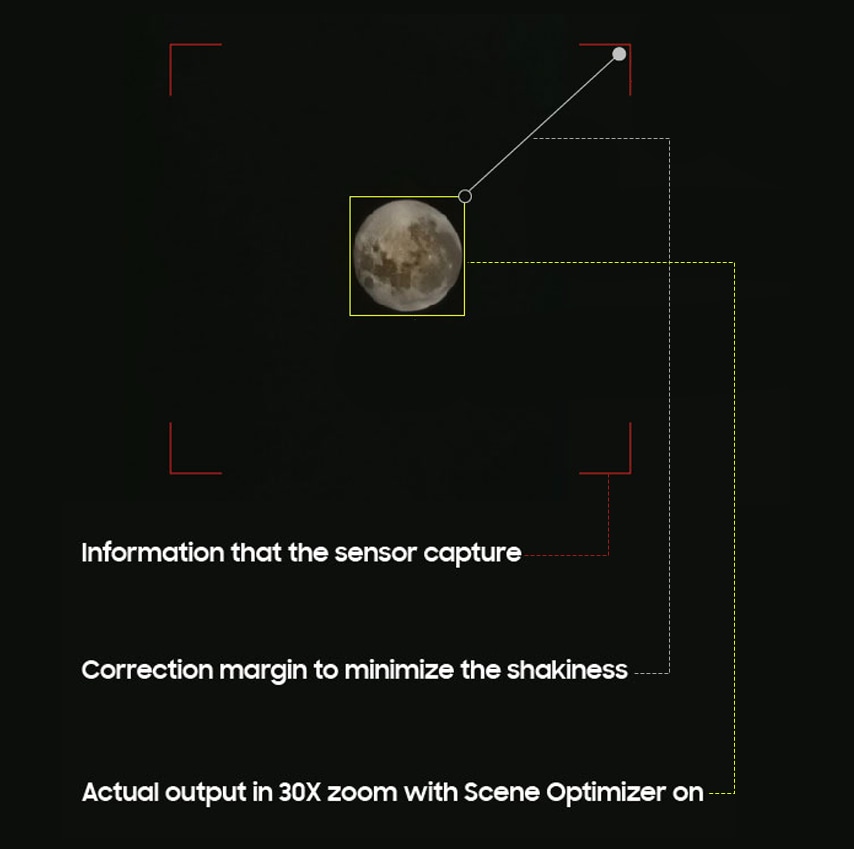How Samsung Galaxy Cameras Combine Super Resolution Technologies with AI to Produce High-Quality Images of the Moon
Since the Galaxy S10, Galaxy smartphone cameras have included Scene Optimiser. This camera function uses advanced AI to recognise objects.
Since the Galaxy S21 series, Scene Optimiser has had the capacity to recognise the moon as an object. This means that the detail enhancement engine, a key feature of Scene Optimiser, is applied to photos of the moon.
When you take a photo of the moon with your Galaxy device, the camera system uses deep learning-based AI, along with multi-frame processing, to enhance details.
Here we will explain more about the multiple steps, processes, and technologies involved in delivering high quality images of the moon.
Please note: If you want to take a photo without AI support, deactivate Scene Optimiser: Camera app > Camera settings > Scene Optimiser > Off
To take a clear picture of the moon, Galaxy cameras employ Super Resolution to combine more than 10 images. The image quality is then improved using digital zoom, removing noise, and enhancing illuminations and clarity.
Super Resolution produces images made up of multiple frames. When Scene Optimiser is on and the moon is recognised as an object, the camera will produce a clear image.

AI deep learning for object recognition
The engine developed by the Galaxy team recognises the moon as an object, based on a range of moon shapes and details. It recognises everything from full to crescent moon.
When the AI model has completed its learning, it can detect the area occupied by the moon, even in images that weren’t used in training. However, if the moon is obscured by clouds, it will not be recognised by the camera.

The process for cleaning Galaxy Buds Live is slightly different. They have wingtips rather than earbud tips; these wingtips are flatter than earbud tips:
Brightness control process
When the moon has been recognised, the device will control how bright the display is to show the moon more clearly while maintaining optimal brightness.
This means that when users take a picture of the moon in the early evening, the sky around the moon will appear darker than the actual sky; the device will darken the object background brightness to make the moon appear more clearly.

Capturing the most stable images possible
Galaxy cameras have a Zoom Lock feature. This automatically reduces the effects of a shaking device without having to use a tripod. It combines OIS (Optical Image Stabiliser) and VDIS (Video Digital Image Stabilisation) technology.
When zooming in and touching the display or keeping focus on the moon for more than 1.5 seconds, Zoom Lock will automatically activate. The border line of the zoom map in the upper right corner of the screen will change from white to yellow, and the moon will be fixed on the display.
Tips when taking photos of the moon at 100x zoom:

AI-based detail enhancement to capture the moon
When image of the moon is at an appropriate level, you can press the capture button. The camera will then take several steps to deliver a bright, clear image of the moon.
First, Scene Optimiser uses AI processing to confirm whether to apply the detail enhancement engine.
The camera then takes multiple pictures and synthesises them into a single bright image with reduced noise.
Once multi-frame processing has taken place, the Galaxy camera uses Scene Optimiser’s deep learning-based AI detail enhancement engine to eliminate any remaining noise and enhance the details of the image even further.

Samsung is continuously improving Scene Optimiser to reduce any potential confusion that may occur between taking a picture of the real moon and an image of the moon.
Thank you for your feedback!
Please answer all questions.